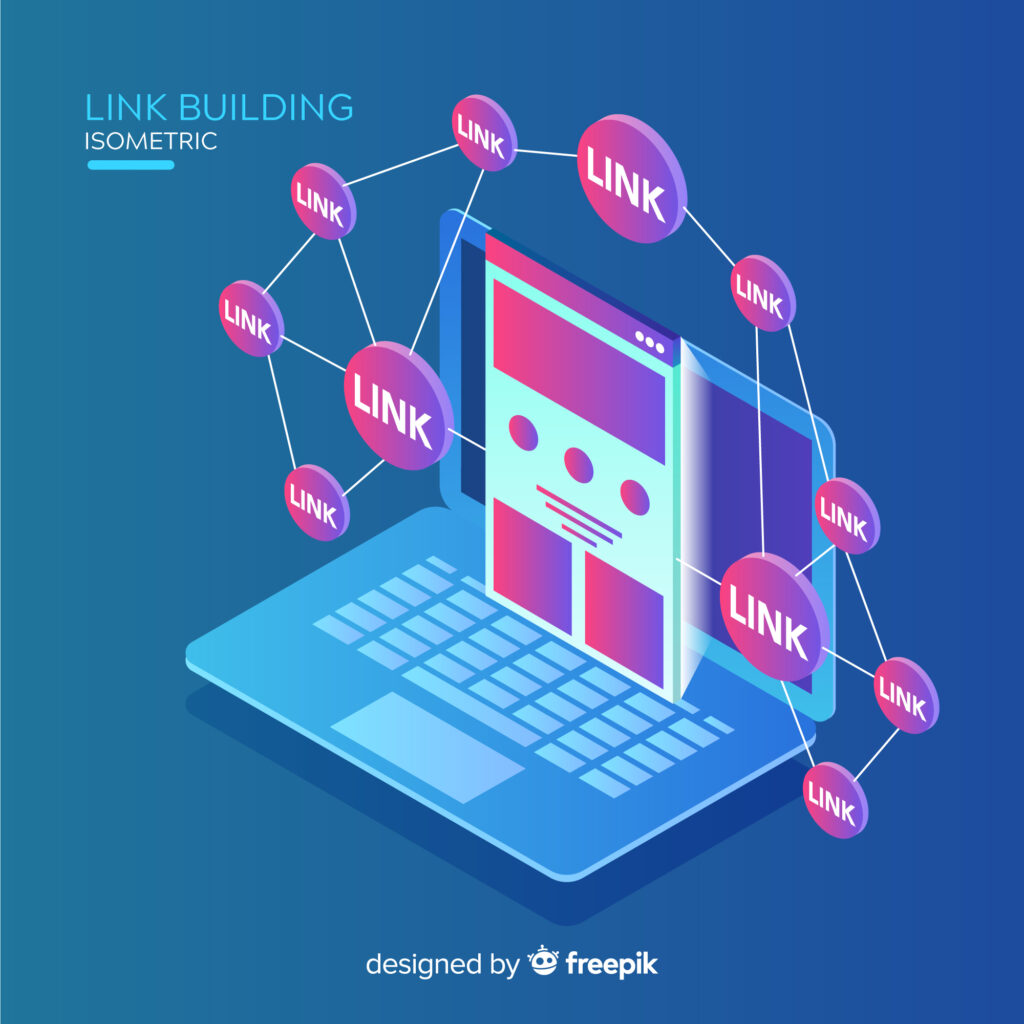
How Tiered Link Building Turns One Link into a Ranking Network
Tiered link building isn’t about stacking links randomly… It’s about building a strategic support system behind your best backlinks.
Practically, by doing this, you’re not just creating backlinks to your site; you’re creating backlinks to the backlinks that matter most. Done right, this adds layers of credibility, boosts trust signals, and turns a single placement into a mini ranking engine.
The layers that push rankings further:
- Tier 1
This is your front line – the links that point directly to your site. These can include guest posts, niche edits, DR60+ placements, or anything you’d score through Link Juice Club.
- Tier 2
These are the reinforcements. Links that don’t touch your site, but point to your Tier 1 placements instead. Their job is to elevate those Tier 1s by increasing their authority, improving their index rate, and strengthening their perceived relevance.
- Tier 3 and Beyond
This is the wild side of the strategy. These are fast, automated links built for speed, not polish. These Tier 3 links are pointed at your Tier 2s to force indexing and create the appearance of rapid activity.
Google’s algorithm doesn’t judge a link on its own! Instead of that, it looks at the structure behind it.
A Tier 1 guest post backed by 20 relevant links suddenly becomes more than just a backlink; it becomes a trusted node. That’s the real magic of a well-built tiered system.
Use it right, and you’ll fly under the radar while dominating the SERPs.

What a Real Tiered Link Building Campaign Looks Like
If you want to extract every ounce of SEO power from a quality backlink, we’ll show you how to do it.
Spoiler: you can’t do it by spamming more guest posts. Instead of that, focus on building around your strongest placements like you’re fortifying a castle!
Step 1: Lock in Your Tier 1 Asset
You’ve published a DR74 guest post via Link Juice Club on a respected tech review site. The post features an anchor like:
Best smart doorbells for urban homes → linking to your product roundup page.
Now that link becomes your Tier 1, the crown jewel.
Step 2: Reinforce It with Smart Tier 2s
Instead of pointing more links at your site (and triggering red flags), send the reinforcements to your Tier 1:
- Web 2.0 Articles
Publish five short but well-written posts on platforms like Medium, Blogger, and WordPress. Keep the anchors neutral (Read more, Check it out) and link them directly to your Tier 1 guest post.
- Reddit or Quora Threads
Jump into relevant discussions, e.g., homeowners asking about smart home gadgets. Drop your Tier 1 link naturally in a helpful comment. Keep it conversational, not promotional.
- Targeted Niche Edits
Add contextual backlinks from smaller home improvement or DIY blogs, using partial-match anchors like doorbell with camera features. Again, all pointing to your guest post.
Step 3: Let the Funnel Do the Heavy Lifting
You’ve now built a ring of contextual, relevant links that all flow into one powerful Tier 1 asset.
The result?
- Faster indexing of your guest post 💥
- Stronger trust and authority signals 💥
- Co-citation momentum without direct pressure on your site 💥
And because your money page is only one step removed, it benefits from the full cascade of link equity, but with a safety buffer.
This is how pros scale safely. One solid link becomes a distribution node. And Google treats it like a rising authority, all without risking your domain.
So, in short, forget direct spamming!
Tiered Link Building: Danger and Payoff
Tiered link building isn’t a neat, white-hat checklist; it’s controlled chaos. You’re bending the rules, not breaking them outright.
Done right, it’s a power move. Done wrong, it’s a landmine.
The Upside: Why It Still Works
The right Tier 2 strategy can wake up a dormant link. That nofollow DR76 placement you dismissed? Feed it a dozen supporting links and watch it start ranking.
Tiered link building also makes parasites stick. Those third-party pages that usually die after a week? Boost them with a few contextual backlinks and they’ll hold top rankings for months.
And here’s the kicker, it’s cost-efficient. A $250 link supported by $80 in Tier 2s can perform like a $600 link.
Most SEOs miss this – don’t be one of them.
The Dark Side: What Can Go Wrong
Over-optimized anchor text is a fast track to trouble. If your Tier 1 link is blasted with exact-match anchors like buy home alarm system, you’re basically inviting Google’s Penguin penalty to crash the party.
Keep anchor variety tight and natural – reserve aggressive anchor plays for authority Tier 1s only.
Pointing spammy Tier 3 links directly at your Tier 1 or worse, your money site? That’s a rookie mistake. Keep your layers separated, and organize every move with clean documentation.
How to Know When a Link Deserves Backup
Not every backlink is worth building a campaign around.
If you’re stacking Tier 2s under a forgotten DR18 blog post from 2013 that isn’t even indexed, you’re not doing SEO, you’re lighting money on fire.

Start With Indexation
The first rule? If the page isn’t indexed, it’s a ghost.
Google can’t pass value through something it doesn’t see.
Use simple checks like site:[URL] or an index status tool. If it’s missing from the index, try nudging it with Web 2.0s, traffic simulations from Quora or Reddit, or a press release blast.
Still invisible after all that? Scrap it and move on.
Look for Parasite Potential
Some domains are built to rank fast. If your Tier 1 link lives on platforms like Medium, Outlook India, or LinkedIn Articles (or sits on a DR70+ niche blog) it’s a strong contender.
These pages already have search engine power, and with just a bit of support from Tier 2 links, they can pass serious ranking strength to your site.
Evaluate Link Quality and Placement
Tier 2s amplify what’s already there, so you want to double down on quality, not garbage. If the link is buried in the footer, surrounded by spammy outbound links, or sits on an irrelevant, low-content page, adding backlinks won’t help.
But if it’s a contextual, dofollow link placed high in the article, surrounded by relevant copy, that’s green-light material.
Consider the Investment
Links you pay real money for should never sit idle. If you dropped $300 on a legit guest post with strong content and a clean domain, why leave it raw?
These are the links that deserve extra juice. With smart Tier 2s, you’re multiplying ROI, not just getting traffic, but ranking power.
Know When to Walk Away
Not every link needs a tiered network. Skip the spammy reseller links with 20 outbound placements per post. Don’t bother with links on noindexed or robots.txt-blocked pages.
And if it’s a DR7 blog that looks like it was built in 2009 and hasn’t seen traffic since? Save your effort. Not everything is worth boosting!
Measuring the Impact of Tiered Link Building
You can’t just build links and hope for the best. If you’re not measuring performance, you’re not doing SEO. Here’s how to track the real-world impact of your tiered link structure.
1. Check the Movement on Your Tier 1 Pages
If your Tier 1 placements aren’t ranking or even indexed, your entire pyramid is built on sand.
A properly juiced guest post should start ranking for long-tail keywords, branded searches, or even pull traffic on its own. This tells you Google sees it as a legitimate authority signal, and that means more equity flows to your money site.
If your Tier 1 content is stable and growing, your Tier 2s are putting in work behind the scenes. 🙏
2. Watch the Rankings on Your Money Page
This is the main event. The page receiving the Tier 1 link should start climbing up the SERPs once your tiers kick in.
Use SERPRobot, Ahrefs, and similar tools to track shifts in keyword rankings, click-throughs, and even conversions. If you’re seeing upward momentum without adding more direct backlinks, your pyramid is passing juice exactly as intended.
3. Monitor Backlink Growth That Doesn’t Touch Your Site
This is where things start to click. If your website traffic is going up, but your own backlink count hasn’t changed, that’s not magic – it’s stealth-tiered SEO in action.
What’s happening is your Tier 1 links (the ones pointing to your site) are getting their own backlinks, and that boost flows down to you.
Smart brands do this all the time to scale safely without setting off any red flags.
4. Confirm Indexation and Simulate Engagement
A dead Tier 2 page won’t pass anything. Make sure your Tier 2 links are indexed and getting crawled.
If they’re not, power them up with Tier 3 links or traffic pings.
If you want to really accelerate things, simulate engagement using platforms like MicroWorkers. A few click-through paths from Tier 2 → Tier 1 → money page can trigger stronger indexing and make the whole chain more impactful.
Key Takeaways: Tiered Link Building Is About Engineering Impact, Not Just Visibility
Tiered link building isn’t about gaming the system, it’s about building a system.
Think of it as link architecture: a layered structure designed to multiply trust, amplify authority, and accelerate your rankings with precision.
Most SEOs stop at building a single backlink and hope it performs. But if you’re serious about SEO, you know better.
Basically, it’s not just the link that matters, it’s what powers that link behind the scenes.
Done right, this approach compounds results, stretches your budget further, and creates a flywheel of steady momentum.
Here’s what that really means:
- ✨ Tiered SEO means scalability with stealth.
Instead of overloading your site with direct links, build a support network that grows rankings safely and organically.
- ✨ Your top links need backup.
Spending $400 on a premium guest post is just the start. To unlock its full impact, you need to build supporting links around it. Add Reddit mentions, Web 2.0 posts, and related backlinks that point to it.
- ✨ You’re not building links! You’re building leverage.
Tiered systems let every dollar you spend work harder, longer, and with less risk.
If your current link building ends with a placement and a pat on the back, you’re missing the point.
The winners in SEO don’t just get links; they weaponize them.





